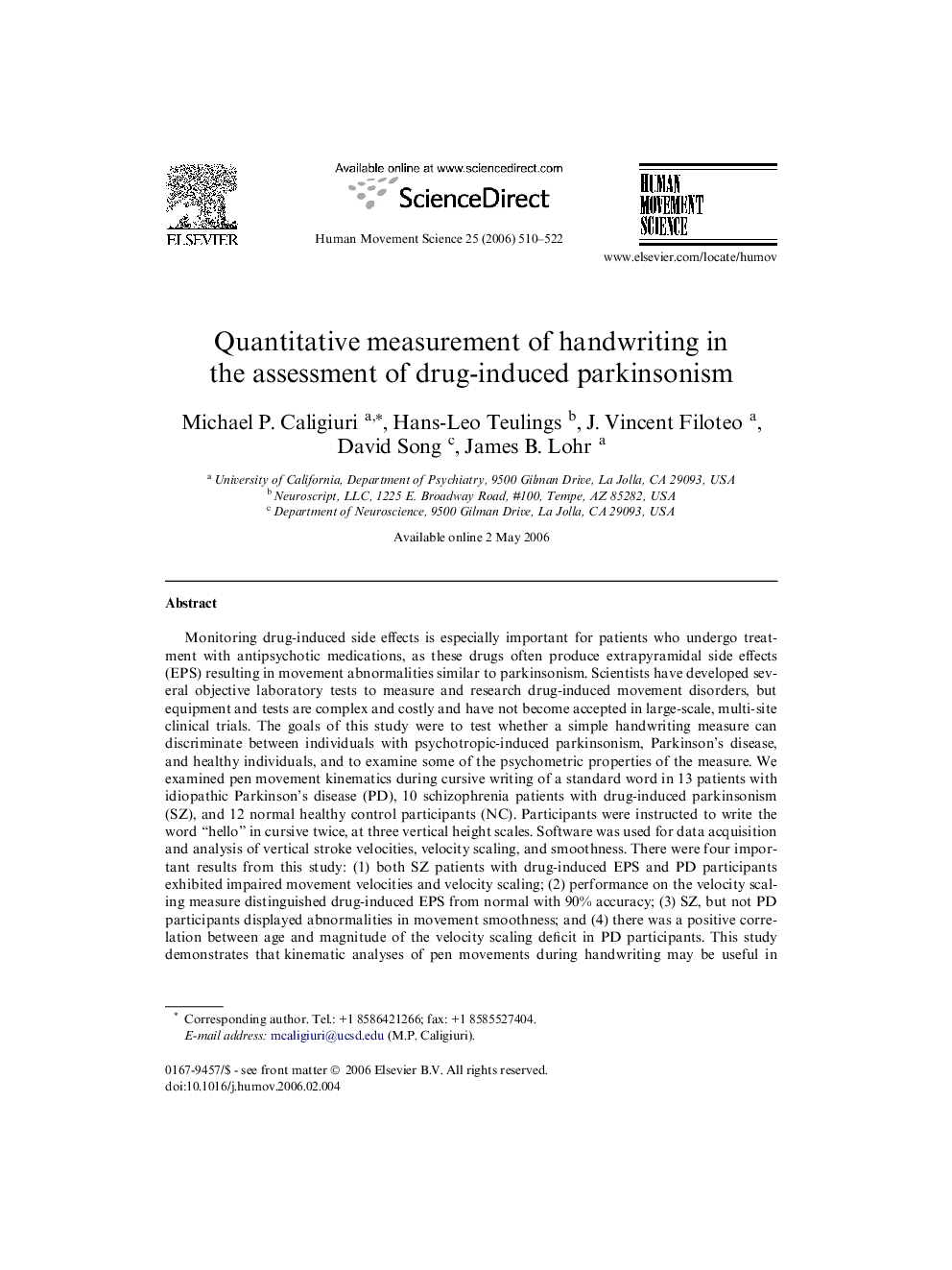| Article ID | Journal | Published Year | Pages | File Type |
|---|---|---|---|---|
| 928921 | Human Movement Science | 2006 | 13 Pages |
Monitoring drug-induced side effects is especially important for patients who undergo treatment with antipsychotic medications, as these drugs often produce extrapyramidal side effects (EPS) resulting in movement abnormalities similar to parkinsonism. Scientists have developed several objective laboratory tests to measure and research drug-induced movement disorders, but equipment and tests are complex and costly and have not become accepted in large-scale, multi-site clinical trials. The goals of this study were to test whether a simple handwriting measure can discriminate between individuals with psychotropic-induced parkinsonism, Parkinson’s disease, and healthy individuals, and to examine some of the psychometric properties of the measure. We examined pen movement kinematics during cursive writing of a standard word in 13 patients with idiopathic Parkinson’s disease (PD), 10 schizophrenia patients with drug-induced parkinsonism (SZ), and 12 normal healthy control participants (NC). Participants were instructed to write the word “hello” in cursive twice, at three vertical height scales. Software was used for data acquisition and analysis of vertical stroke velocities, velocity scaling, and smoothness. There were four important results from this study: (1) both SZ patients with drug-induced EPS and PD participants exhibited impaired movement velocities and velocity scaling; (2) performance on the velocity scaling measure distinguished drug-induced EPS from normal with 90% accuracy; (3) SZ, but not PD participants displayed abnormalities in movement smoothness; and (4) there was a positive correlation between age and magnitude of the velocity scaling deficit in PD participants. This study demonstrates that kinematic analyses of pen movements during handwriting may be useful in detecting and monitoring subtle changes in motor control related to the adverse effects of psychotropic medications.
